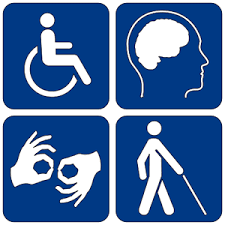
What is Universal Design and Who Benefits?
What is Universal Design and Who Benefits?
Universal Design (UD) is the process of designing an environment so that it can be accessed, understood and used by all people regardless of their age, size, ability or disability.
This is not just a special requirement for the benefit of only a minority of the population. Universal design is a fundamental condition of a good design philosophy. If an environment is accessible, usable, and convenient everyone (especially businesses!) benefit.
For a more official definition, The Disability Act 2005 defines Universal Design, or UD, as:
1. The design and composition of an environment so that it may be accessed, understood and used
- To the greatest possible extent
- In the most independent and natural manner possible
- In the widest possible range of situations
- Without the need for adaptation, modification, assistive devices or specialized solutions, by any persons of any age or size or having any physical, sensory, mental health or intellectual ability or disability, and
2. Means, in relation to electronic systems, any electronics-based process of creating products, services or systems so that they may be used by any person.
Why Consider Universal Design?
Accessibility is essential to creating an inclusive environment. Creating accessibility in physical spaces, electronic content, and learning environments requires additional thought and planning at the beginning stages. Here’s two great points on why you should consider universal design:
1. It’s easier to plan from the start than retrofit an inaccessible space. Regardless of your space, whether be a university, workplace, school, among others, it’s always easier to design with accessibility in the front of mind from the outset.
2. Universal Design benefits a diverse mix of people – UD caters for varying learning styles, preferences and abilities; allowing an adaptive environment that does not restrict functionality. By creating a space that is accessible to everyone, you can maximize your opportunity to help people who may need your services or facilities.
Seven Principles of Universal Design
Universal Design (UD) is not a new concept. In 1997, a working group of architects, product designers, engineers and environmental researchers, led by the late Ronald Mace, an internationally recognized architect, formulated a set of 7 principles aimed at creating inclusive environments inherently accessible to all. The full incorporation of the 7 principles, would mean that all people would be able to access both the built and social environments.
- PRINCIPLE ONE: Equitable Use – The design is useful and marketable to people with diverse abilities.
- PRINCIPLE TWO: Flexibility in Use – The design accommodates a wide range of individual preferences and abilities.
- PRINCIPLE THREE: Simple and Intuitive Use – Use of the design is easy to understand, regardless of the user’s experience, knowledge, language skills, or current concentration level.
- PRINCIPLE FOUR: Perceptible Information – The design communicates necessary information effectively to the user, regardless of ambient conditions or the user’s sensory abilities.
- PRINCIPLE FIVE: Tolerance for Error – The design communicates necessary information effectively to the user, regardless of ambient conditions or the user’s sensory abilities.
- PRINCIPLE SIX: Low Physical Effort – The design minimizes hazards and the adverse consequences of accidental or unintended actions.
- PRINCIPLE SEVEN: Size and Space for Approach and Use – Appropriate size and space is provided for approach, reach, manipulation, and use regardless of user’s body size, posture, or mobility.
Incorporating elements of UD via these principals is likely to help educate and inform the individuals who are interacting in your space. This group of individuals stretches further than those covered under legislation such as the Americans with Disabilities Act (ADA).
Who Benefits?
As we have mentioned, universal design benefits everyone. However, the potential for UD to improve the lives and work of individuals and communities is wide-reaching. Take for instance:
- The Deaf & hard-of-hearing,
- Wheelchair users,
- Amputees,
- People with learning difficulties or learning disability,
- People with limited mobility, and
- The Blind & low-vision
You can read more on designing for accessibility in our blog here.
Specific Benefits?
Universal design can benefit any service, business, or household. Some general benefits that you’ll notice may include:
- Improved reputation with communities
- Lowered barriers on inclusion
- More people access services
- Efficient work spaces
- Friendlier & less stressful environments
- Discourages prejudicial attitudes
Universal design is a philosophy that opens the way for greater potential growth while improving the experiences of those who lack access. Whether it is school, university, the workplace, events or TV, universal design can be applied to anything.
Our products include: